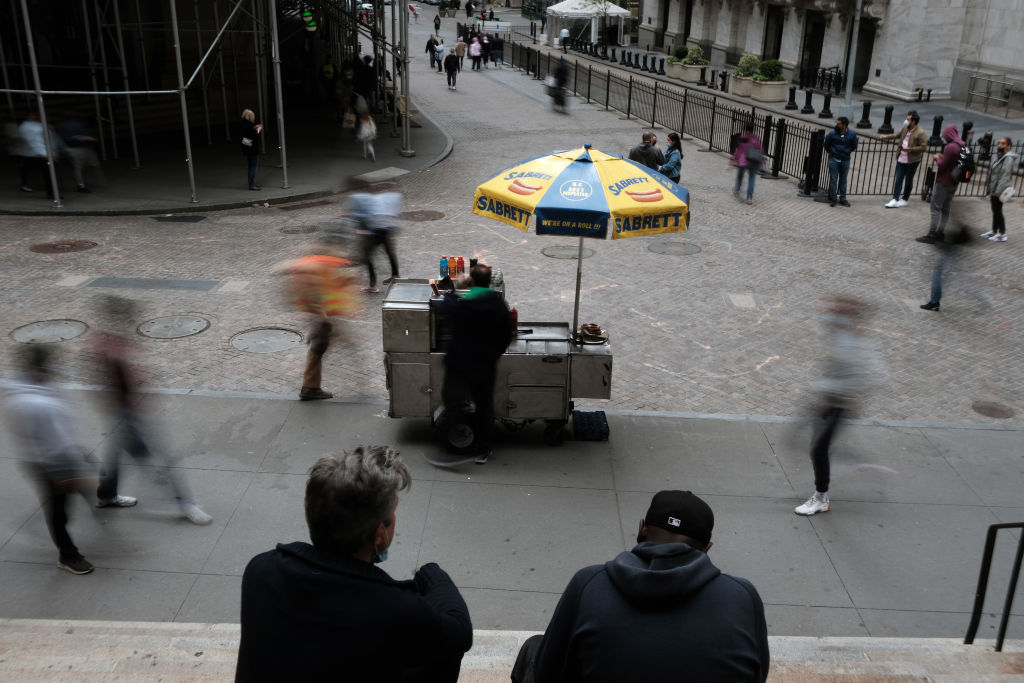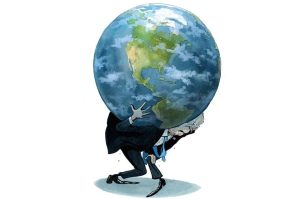‘We have nothing to fear but fear itself,’ said Franklin D. Roosevelt famously, at his first inauguration in the depths of the Great Depression in 1933. What he didn’t allow for was the danger of overconfidence. Yes, a country can talk its way into recession, but it can also print and spend its way into an inflationary nightmare. That is the worrying prospect now facing America as Joe Biden, a president often compared to FDR, tries to tempt the country into a post-Covid spending spree courtesy of magic money.
It has become deeply unfashionable to worry about inflation. According to proponents of modern monetary theory, what happened in Weimar Germany and more recently in Mugabe’s Zimbabwe somehow is not relevant to developed economies. Governments can print their way out of economic crises without worrying about debt or inflation. Why, look what happened after the 2008-09 crisis when governments first started quantitative easing, they say: we had no inflation problem after that, however the Cassandras cried. Biden’s various multitrillion plans, including that $1,400 of helicopter money to every American who earns up to $75,000 a year, are not risky bets but wise and equitable policies which will return the US to growth and a fairer economy.
We have been here before. During the dotcom boom, the bulls kept saying there was nothing to worry about; a ‘new paradigm’ would sustain permanently higher share prices and generate wealth out of thin air. But in the end it turned out that the laws of gravity had not been repealed after all. Dotcom shares really were overvalued, and investors were caught with their trousers down. As with the dotcom boom, so with government stimulus packages. Sooner or later — more likely sooner — a reckoning is coming. You can’t keep borrowing and expect interest rates not to rise; you can’t keep printing money and expect inflation to stay low. The argument that we didn’t have inflation as a result of post-2008 quantitative easing simply isn’t true; it is just that it afflicted asset prices rather than consumer prices, and warped the economy in ways that were slightly harder to see.
Inflation isn’t going to stay contained within asset bubbles — not with Biden dropping so many dollars into every backyard and dolloping them all across the system. The result will be more buying power, without any extra capacity in the economy. Indeed, all that extra buying power will soon be flooding into consumer markets with a finite amount of stuff to buy. Many businesses have been shattered by the pandemic and the ensuing restrictions on day-to-day life. Meanwhile, if Chinese factory-gate prices are anything to go by — they’re currently escalating at a rate of over six percent a year — the cost of imports is about to surge. The era of low inflation, through which we have been living for three decades, was the happy product of China’s opening up to the world. The increase in low-cost labor seemed limitless for western producers, many of whom shifted production to Asia to take advantage. The result was that we stopped worrying about overheating economies causing inflation; there were far more powerful deflationary forces at play.
That time is coming to an end. China’s economy is not going to open any further; on the contrary, trade wars are beginning to thwart the benign deflationary forces of offshoring. Western industrial economies are beginning to repatriate production, not least because of the stresses in the system revealed by the pandemic: manufacturers are realizing the risks of ‘just-in-time’ production, which relies on the timely arrival of parts from the other side of the world. As a result, the West is going to be much more exposed to the effects of economic overheating. Just look at the bond markets, which have already sniffed the risks posed by inflation.
The Biden administration insists that its stimulus package does not rely entirely on inflation. It is planning nearly to double the capital gains tax to 39.6 percent. But whether or not that actually raises more revenue is moot. Biden is under serious pressure to raise, or abolish altogether, the cap on how much state and local tax (SALT) taxpayers can deduct from their federal tax bills. Under Trump’s Tax Cuts and Jobs Act of 2017, this was limited to $10,000. Democrats hate the SALT cap because it discriminates against taxpayers who live in high-tax states like New York. But if the SALT cap were eliminated altogether, estimates the Joint Committee on Taxation, it could cost the federal government $88.7 billion in revenue, with the rich benefiting most. How ironic that Biden could scupper his own spending plans through an inadvertent tax cut for the wealthy.
For now Biden can keep promising more spending while vaguely summoning the specter of taxes for the rich. The feast of free money is bound to go on until the laws of economic gravity assert themselves once more, a fate almost prophetically described in Kipling’s 1919 poem, ‘The Gods of the Copybook Headings’, a warning from the first great era of free money. Kipling foresaw an attempt to establish a brave new world ‘when all men are paid for existing and no man must pay for his sins’. Needless to say, his poem didn’t end well, but in ‘terror and slaughter’. Given what happened after the Weimar inflation, this proved more accurate than any economist’s prediction.
This article was originally published in The Spectator’s June 2021 World edition.


















